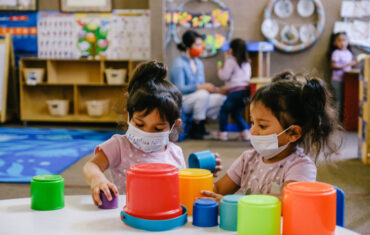The message from public health officials is clear: You should wear a mask when you go out in public to help limit the spread of COVID-19. But information on exactly what kind of mask to wear and how effective they are has been limited. Any face masks is better than no face mask during the pandemic. But all masks are not created equal.
Anti-maskers argue that forcing someone to wear a face mask is an infringement on rights, such as the right to decide what represents an acceptable risk to oneself. When it comes to masks, however, the infringement justification does not hold water. The primary duty of a face covering is not to protect the wearer like a helmet does, but to protect others. If you are COVID-19 asymptomatic and you refuse to wear face mask in public, your body effectively becomes a bioweapon.
Bandanas are the least-effective.
In a Florida Atlantic University study, scientists found that droplets from a bandana-covered cough traveled 3 feet, 7 inches, compared to 8 to 12 feet with no face mask at all. Holding a double-folded handkerchief over one’s mouth was much more efficient — it stopped droplets from going more than 1.25 feet.
Get one made of cotton.
Tightly woven, 100-percent cotton works well. Christopher Zangmeister, co-author of a new study published in ACS Nano, told NPR that microscopic cotton fibers have a more three-dimensional structure than synthetic materials. This makes face mask more efficient at snagging incoming particles.
The more layers, the better.
Cloth mask has two layers of tight-weave cotton are good, three or more are better. The CDC recommends at least three fabric layers, which can include a middle layer of filtering material.
Masks with a filter pocket between two layers
A two-layer, tight-weave cotton mask alone can filter out about 35% of small particles. But if a filter made out of two layers of charged polypropylene is placed in the pocket, cloth mask ’s filtration efficiency could double to up to 70%. Polypropylene and spunbond, hold an electrostatic charge that traps incoming and outgoing particles.
Fit matters.
It’s important that a cloth mask seals snuggly to your face. If gaps open up where the mask touches the skin, its effectiveness is compromised. Folded, pleated and duckbill masks allow more air flowing through the fabric and less leaking out the sides compared to a flat-front mask.
Neck gaiters, tubes or buffs, which cover the nose down to the neck, solve the air-leakage problem. Many people find them more comfortable than masks. This because they don’t have ear loops or ties. However, they are generally made of polyester, which are less effective at filtering particles than cotton. Some come with filters. Sample complaints from product reviews include: too hot during the summer, easy to slip off nose, filter does not stay over the mouth.
Don’t buy a mask with a vent or exhalation valve.
While they make breathing easier, vents defeat the mask’s purpose because they release unfiltered air that can contain droplets. Industrial-grade N95 masks designed for smoky or smoggy environments often have these valves. Reports of stores and other businesses barring entry to customers wearing vented masks are increasing. If you already own one, either put a second face mask over top of it or completely cover the vent with tape or a sewn-on patch.
Exception:
Some vented face masks have filters that trap exhaled droplets, making them safe for others. However, it’s not possible to tell whether a valve is filtered or not just by looking at it. Mayo Clinic guidelines prohibit the wearing of cloth mask with valves or vents.
Make sure your mask is washable.
Unlike medical masks, which are normally designed for single-use, cloth mask should be washed after every use and worn until the fabric or structure breaks down.






